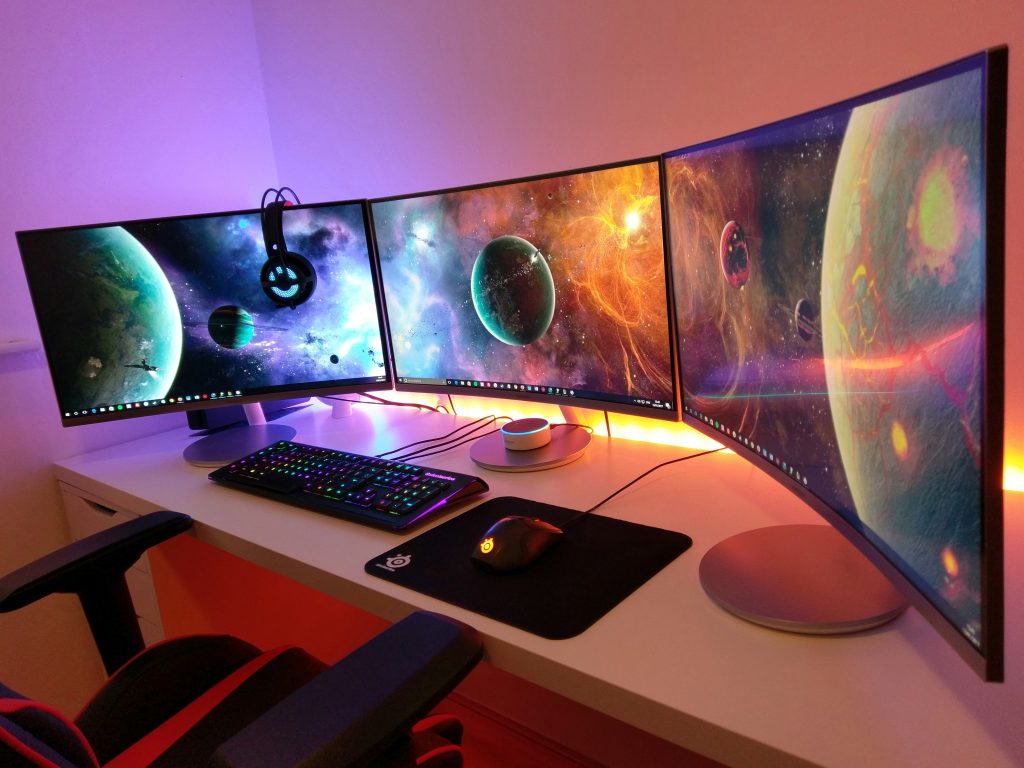When it comes to choosing the right gaming monitor, there are several key factors to consider. The right display can enhance your overall experience, whether you’re playing fast-paced games or enjoying visually stunning worlds. But with so many options available, it can be overwhelming to decide which features matter most. Here’s a guide to help you figure out what to look for when selecting the perfect gaming monitor.
1. Resolution: The Importance of Clarity
One of the first things to think about is the resolution. The higher the resolution, the sharper the image will appear. Most gamers opt for 1080p (Full HD), but for those looking for an even clearer picture, 1440p (QHD) or 4K (Ultra HD) are worth considering. If you’re into detailed graphics or want a more lifelike visual experience, 4K is a great option, but it requires a powerful system to run effectively.
2. Refresh Rate: How Smooth Do You Want It?
Refresh rate refers to how often the monitor updates the image per second. A higher refresh rate means smoother motion, especially important in fast-moving games. A 60Hz refresh rate is standard, but for better performance, many gamers prefer 120Hz, 144Hz, or even 240Hz. If you’re someone who plays fast-paced or competitive games, a higher refresh rate can make a significant difference, reducing motion blur and making every action feel more responsive.
3. Response Time: Reducing Delays
Response time is the amount of time it takes for a pixel to change from one color to another. Lower response time means less blur and ghosting, which is critical for fast-moving games where precision matters. Look for monitors with a response time of 1ms to 3ms to ensure that actions happen almost instantly and that you don’t experience lag during gameplay.
4. Panel Type: Choose What Works Best for You
The type of panel a monitor uses will affect its color accuracy, viewing angles, and overall performance. There are three common types:
- IPS (In-Plane Switching): These panels are known for vibrant colors and excellent viewing angles. If you’re into games with rich, detailed environments, this is a solid choice.
- TN (Twisted Nematic): These panels usually have faster response times and are more affordable, but the color accuracy and viewing angles can be less impressive than IPS.
- VA (Vertical Alignment): These panels offer good contrast and deep blacks but tend to have slightly slower response times than TN panels. They strike a balance between color accuracy and performance.
Each type has its advantages, so think about what’s more important to you: speed or color quality.
5. Size and Curve: Finding the Right Fit
The size of your monitor will influence how better you feel in the game, but it also depends on how much space you have. A monitor around 24 to 27 inches is ideal for most users, providing enough screen real estate without feeling too overwhelming. If you have the space and want something larger, a 32-inch screen or even bigger could be a great choice.
Curved monitors are becoming increasingly popular as they offer a more natural viewing experience, especially with larger displays. A slight curve can improve the field of view and make it feel like the action is surrounding you, but it’s a matter of personal preference.
6. Connectivity: Making Sure It All Works
When it comes to connectivity, it’s important to ensure that the monitor you choose has the right ports for your devices. Look for multiple HDMI and DisplayPort inputs to ensure you can connect your gaming console, PC, or even multiple devices without constantly unplugging cables. USB hubs are also helpful if you want to plug in additional accessories, like a headset or keyboard.
7. G-Sync or FreeSync: For Smooth Frame Rates
To get the most out of your gaming experience, consider a monitor with either G-Sync or FreeSync technology. These technologies help eliminate screen tearing by synchronizing the monitor’s refresh rate with the frame rate of your GPU. This results in smoother visuals and a more consistent experience, especially in games with high frame rates.
8. Price vs. Performance
Finally, it’s important to keep in mind your budget. While it’s tempting to go for the highest-end monitor with all the latest features, you don’t always need the most expensive option to enjoy a great gaming experience. Set a budget and focus on what matters most to you, whether it’s resolution, refresh rate, or panel type. That way, you’ll be able to find a monitor that offers great value for the price.
Conclusion
Choosing the right gaming monitor comes down to balancing features that enhance both performance and visual quality. Consider factors like resolution, refresh rate, response time, and panel type based on your personal preferences and gaming style. With the right monitor, you’ll elevate your gaming experience and enjoy smoother, more vibrant visuals for years to come.

